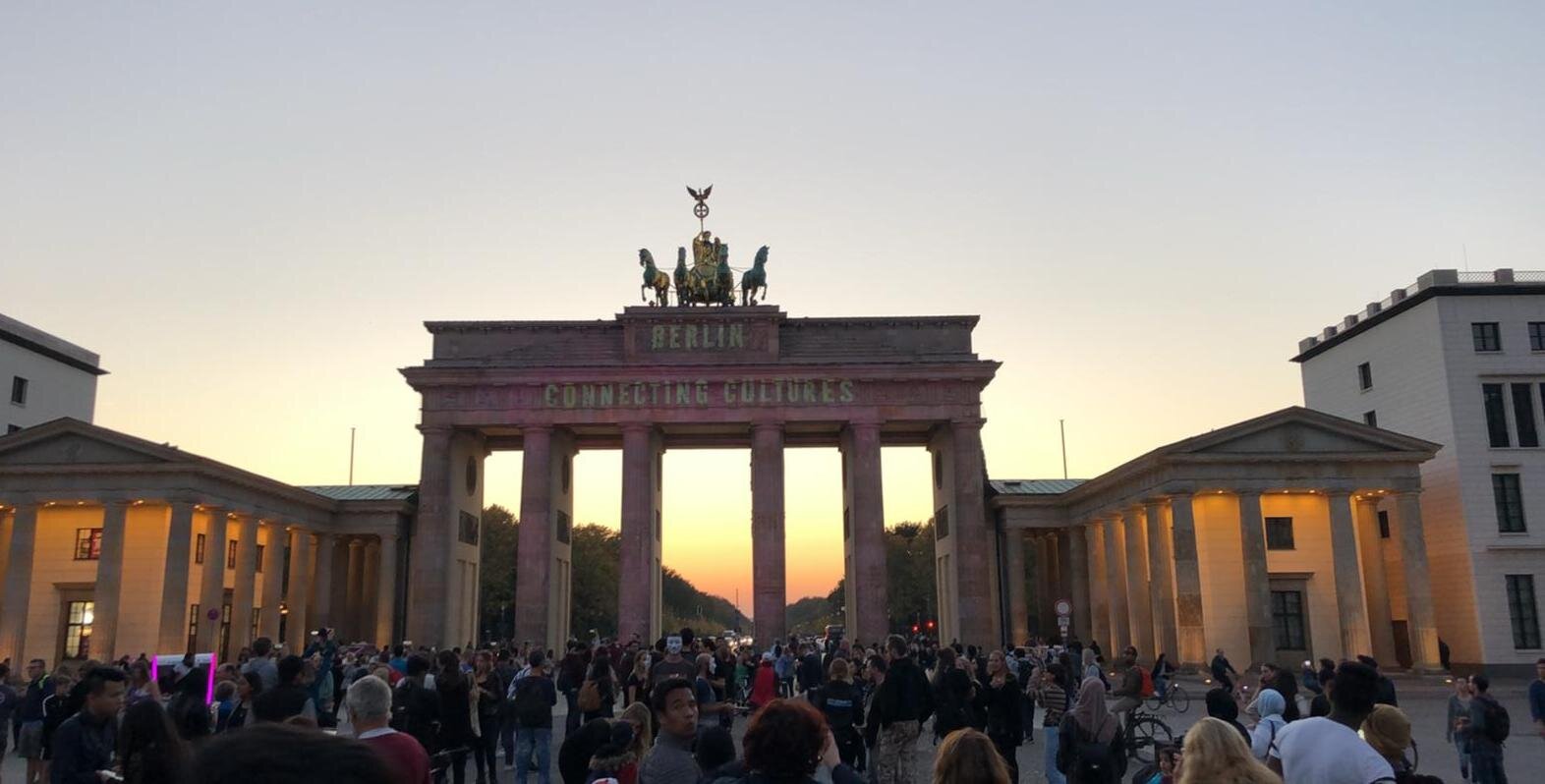
The Brandenburg Gate was Berlin's first Greek revival structure, designed between 1788 and 1791. It was inspired by the monumental gateway at the entrance to the Acropolis in Athens and was designed by Carl Gotthard Langhans, architect to the Prussian court. The Brandenburg Gate is 26 meters high, 65.5 meters long, and 11 meters wide, with two rows of six Doric columns supporting it.
The Quadriga statue, designed by Johann Gottfried Schadow, was installed atop the gate in 1793. This statue, too, has a tale to tell. When Napoleon's army conquered Berlin in 1806, the French Emperor ordered the Quadriga to be shipped to Paris as war booty and a symbol of his triumph. After Napoleon's forced abdication in 1814, the Quadriga was returned to Berlin and reinstalled on the Brandenburg Gate, facing east and the city center.
The Brandenburg Gate was in the Soviet sector after the wartime division of Germany and Berlin in 1946. The Gate stood in an exclusion zone in an arc of the Berlin Wall when it was built in 1961, rendering it inaccessible to locals and tourists alike. When the Berlin Wall came down, 100,000 people gathered here for the official opening of the Brandenburg Gate on December 22, 1989 – and soon after, crowds thronged the area to celebrate the city's first joint New Year's Eve. The Brandenburg Gate symbolizes a reunited Berlin more than almost every other of the city's iconic sights today.
The Brandenburg Gate stands in front of Pariser Platz, one of the city's most attractive squares. The buildings around this historic square were in ruins by the end of WWII. After German reunification in the 1990s, reconstruction at this prime location began, and the buildings now include elegant townhouses, embassies, and the impressive five-star Hotel Adlon.
The Max Liebermann Haus and the Haus Sommer, which are located to the left and right of the Brandenburg Gate, were constructed in a style influenced by Prussian master builder and court architect Friedrich August Stüler. Two other famous buildings house the embassies of France and the United States in this historic location.

The Timeline of the Most Important Events in the Lifetime of the Gate
The Opening of the Gate: Friedrich Wilhelm II commissioned the Gate, which was inaugurated on August 6, 1791. The Gate was built not as a political symbol, but rather to mark the end of the Unter den Linden Boulevard.
The Theft of Statue of Quadriga by Napoleon Soldiers: Napoleon's soldiers stole the Quadriga (the sculpture of a horse-drawn chariot on top of the Gate) in 1806, and returned it to France as a victory prize. The Quadriga, however, was returned to Berlin after Napoleon's defeat.
The Nazi Torchlit Procession: The Nazis organized a torchlit parade through the Gate on January 30, 1933, to mark Hitler's ascension to power.
Soviet Flag over the Gate: The Soviet flag was flown on the top of the Gate from 1945 to 1957. The flag, however, was torn down during nonviolent demonstrations on June 17th, 1953, as demonstrators were demonstrating against the GDR's political and economic conditions.
“Open this gate!” - US President Ronald Reagan: In one memorable address, then-US President Ronald Reagan made his rousing speech before the Gate, exclaiming, “As long as this gate is closed, it is not the German question alone that remains open, but the question of freedom for all mankind… Mr. Gorbachev, open this gate! Mr. Gorbachev, tear down this wall!”
Gate Opened as a Border Crossing: West German Chancellor Helmut Kohl and East German Premier Hans Modrow opened the Gate as a border crossing in December 1989.
The Renovation of the Gate: The Gate was restored for a whopping 6 million Euros by Berlin's Foundation for the Protection of Monuments between 200 and 2002.
The Orland Gay Club Shooting March: Following the 2016 assault on an Orlando gay club, about 130,000 people gathered at the Entrance. To remember the 49 victims, the Gate was lit up in rainbow colors.
The Famous New Year’s Eve Party: Every year, around a million people visit the Gate for its popular New Year's Eve party, which includes music and fireworks.
BY Muhammad Shahzaib Tahir awan (Pakistan) | CLASS OF 2022
